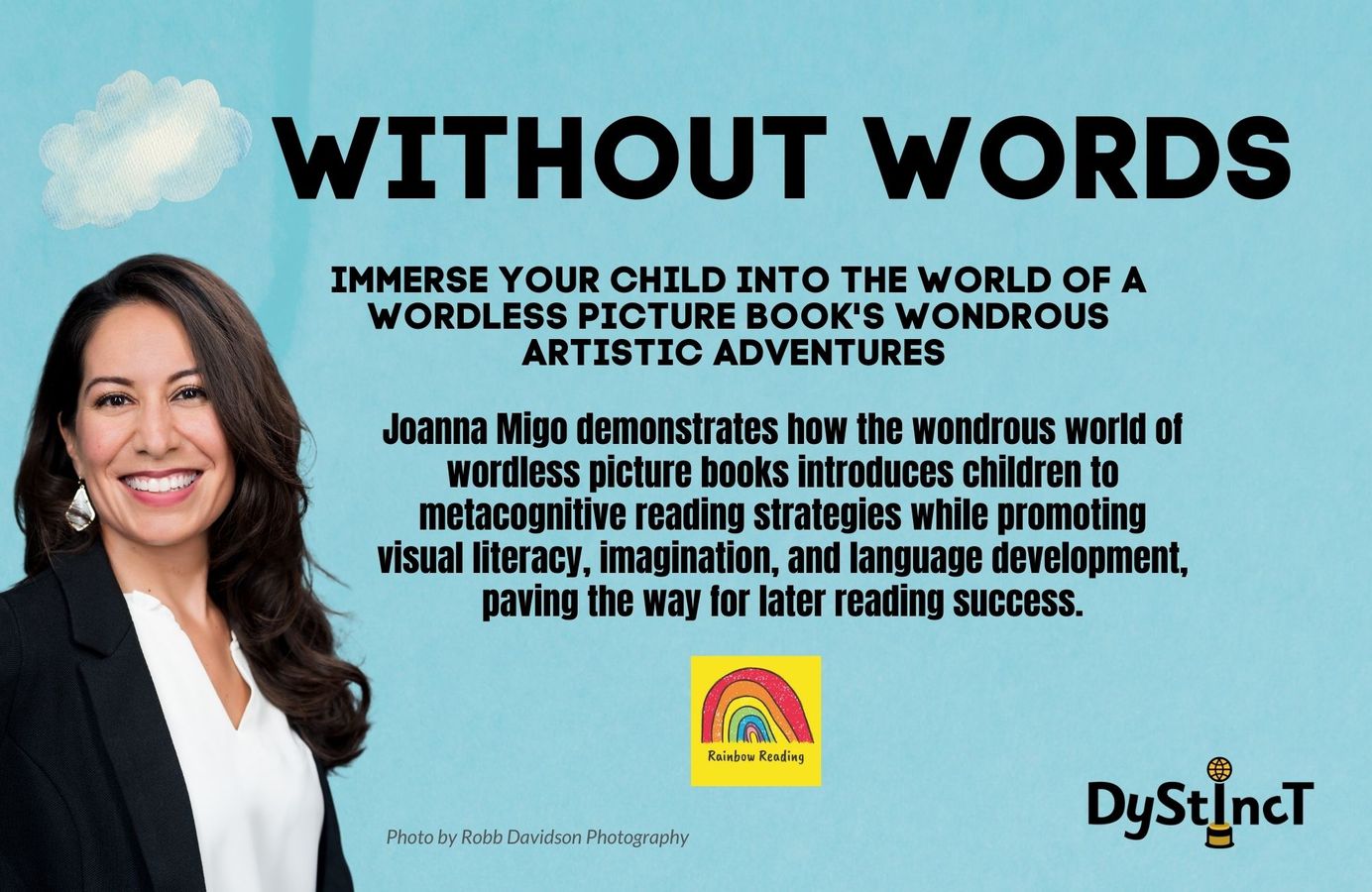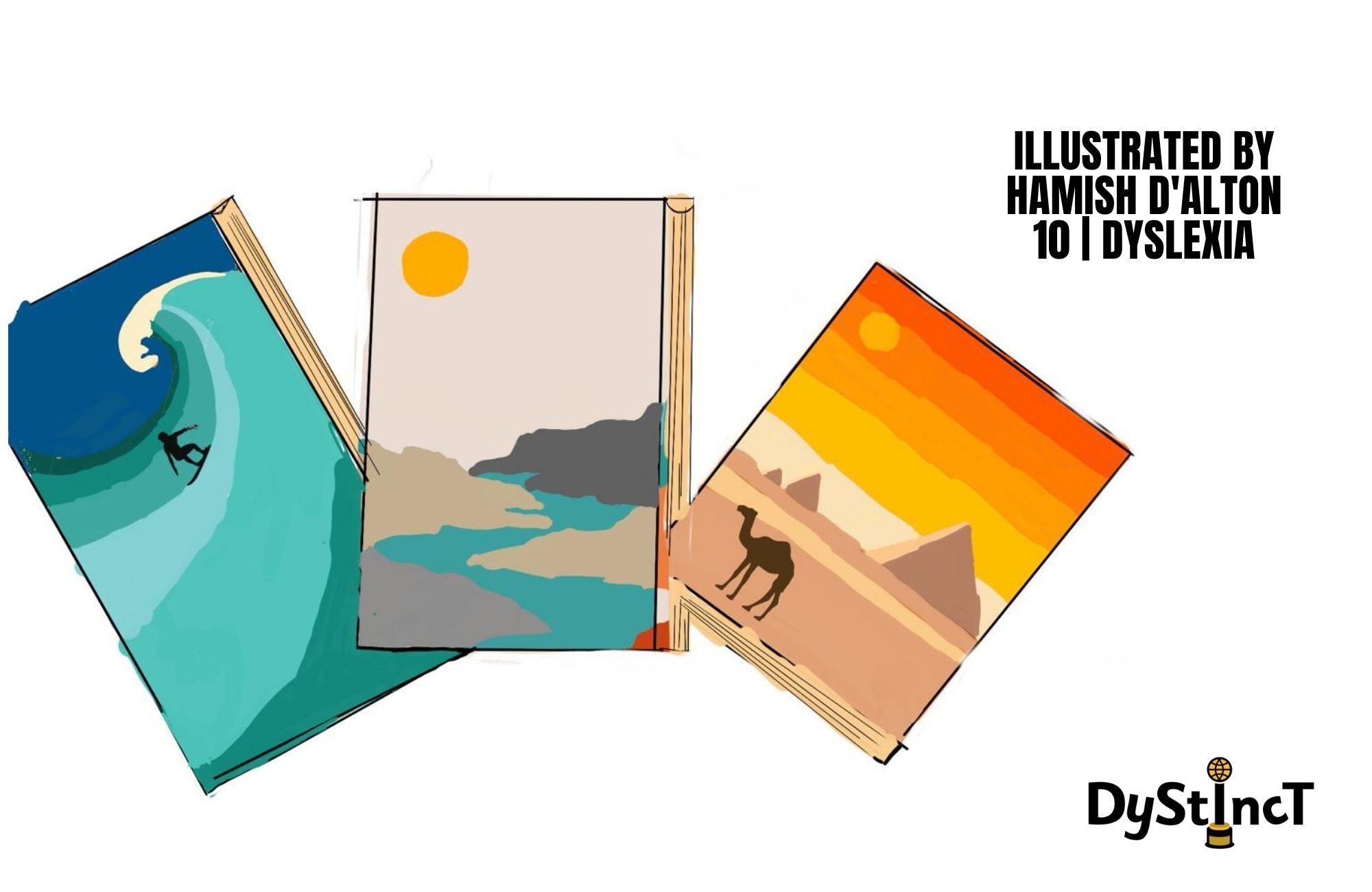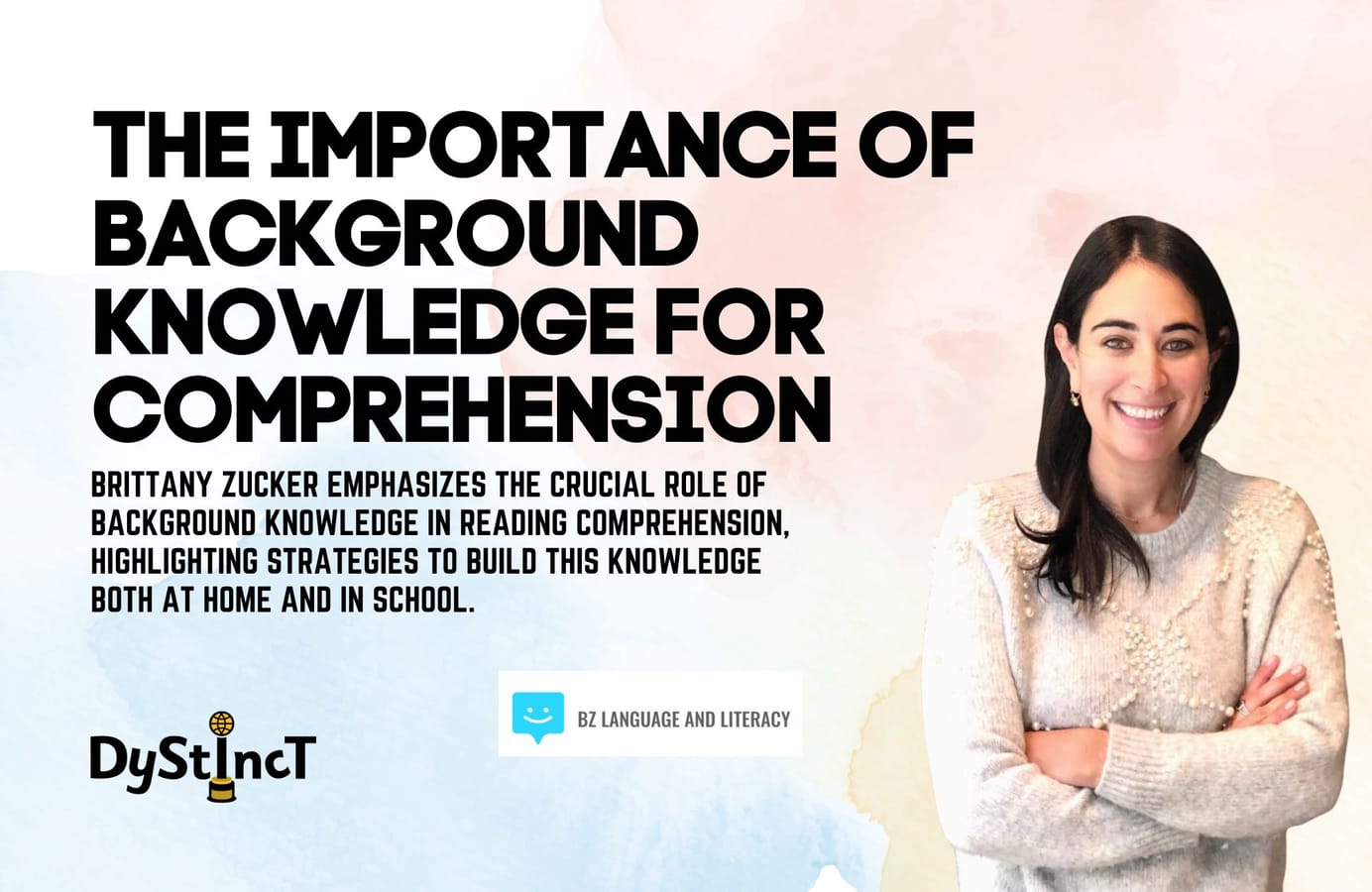
Issue 14: Without Words: Immerse Your Child Into the World of a Wordless Picture Book's Wondrous Artistic Adventures | Joanna Migo
Joanna Migo demonstrates how the wondrous world of wordless picture books introduces children to metacognitive reading strategies while promoting visual literacy, imagination, and language development, paving the way for later reading success.
What defines a Great Story?
A catchy title, exciting plot line, and memorable characters in conflict contribute to the most notable of narratives. But would you believe that some fascinating stories are told through thoughtfully arranged picture frames of whimsical sketches and photo-realistic paintings? Could these be great stories too? And more importantly, is this visual storytelling considered reading?

Wordless picture books are books that tell a story without words. Through innovative and creative format display, a wordless picture book author invites the reader to utilize their imagination and wonder to infer the events unfolding with each turn of the page. There exists a creative variety of art expressions among these types of books. Some authors opt for black-and-white sketches, some for mixed media, and others for realistic art. Each unique expression of art contributes significantly to the story's overall tone, mood, and meaning, offering valuable opportunities for deep dialogues surrounding the illustrator's choice of artistic display to be discussed and appreciated.
Reading comprehension is a process that is both complex and involves various components with a connection to the reader, their prior knowledge, and interaction with the text. Reading research, more than forty years worth, suggests that students experience reading success when teachers explicitly teach the metacognitive skills and strategies to use while reading. These strategies assist in uncovering meaning, subsequently enabling students to develop a deeper understanding of a story. A strategy is a specific action plan explicitly taught to students to accomplish a particular goal. (Paris, Lipson, & Wixson, 1983). An example of a specific strategy for reading is questioning. There are three points at which a teacher can facilitate meaningful questions, including posing questions before, during, and after reading. This allows students to think more deeply about their reading, ultimately engaging in quality discussions. Wordless picture books lend exceptionally well to the comprehension strategy of questioning and other reading strategies, including predicting, inferring, visualizing, and summarizing. With wordless picture books, reading is "seeing," and many incredible opportunities arise to engage students in this metacognitive process.
With wordless picture books, reading is "seeing," and many incredible opportunities arise to engage students in this metacognitive process.
So how exactly do you read and engage with a wordless picture book? Here are some helpful tips to assist you with your visual storytelling adventure:
This post is for paying subscribers only
SubscribeAlready have an account? Log in


